Article
Special Issues
Spectroscopy Supplements
Products
Products
TOF mass spectrometers
The Xevo G2-S QTof and Xevo G2-S Tof benchtop time-of-flight mass spectrometers from Waters are designed with the company's StepWave ion optics and off-axis ion source technology. According to the company, the systems are as much as 20× more sensitive than earlier generation instruments and critical components stay clean longer. Waters Corporation, Milford, MA;

Card extraction LC–MS system
Agilent's automated card extraction LC–MS system is designed as an integrated instrument for the analysis of dried blood spots and other dried media. The system reportedly incorporates the company's 6400 Series triple-quadrupole LC–MS system and is suitable for pharmaceutical and clinical research laboratories. Agilent Technologies, Santa Clara, CA;

MS instrument control software
Thermo Fisher Scientific's instrument control software for its Q Exactive high performance quadrupole-Orbitrap LC–MS-MS system is designed to allow the instrument to collect MS-MS spectra on ions in a sample by selecting broad mass-to-charge ratio windows and fragmenting all precursors in the window. According to the company, the instrument control software allows users to perform data-independent acquisition and targeted quantification experiments on the same instrument. Thermo Fisher Scientific, San Jose, CA;
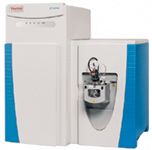
Mass spectrometers
The EVOQ Qube and EVOQ Elite LC–triple-quadrupole mass spectrometers from Bruker incorporate the company's Advance UHPLC systems. According to the company, both systems have a vacuum-insulated probe heated electrospray ionization source, an atmospheric pressure ionization source, a flat-tuning interlaced quadrupole dual funnel, and software that enables "exception-based data review," which reportedly reduces the error rate for quantitative analysis. Bruker Daltonics, Billerica, MA;
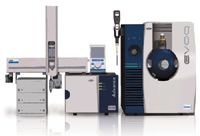
Mass spectrometer
The LCMS-8040 triple-quadrupole mass spectrometer from Shimadzu is designed to provide polarity switching at 15 ms and a high speed-scanning rate of 15,000 u/s. According to the company, the instrument's UFsweeper II collision cell design enables MRM transition speeds of up to 5555 MRM/s. Shimadzu Scientific Instruments, Inc., Columbia, MD;

High-throughput screening software
LibraryView software from AB Sciex is designed for use in identifying contaminants in food, forensic toxicology samples, and the environment, and can be used for clinical research. According to the company, coupled with its QTRAP and TripleTOF technologies, the software enables acquisition of full-scan MS-MS spectra of compounds or contaminants present in a sample. AB Sciex, Framingham, MA;
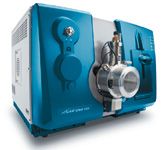
LC–MS system
The 6550 iFunnel quadrupole time-of-flight liquid chromatography–mass spectrometry system from Agilent is designed to increase TOF sensitivity to low femtogram levels. According to the company, the system delivers acquisition to 50 spectra/s and up to five orders of intrascan dynamic range. Agilent Technologies, Santa Clara, CA.
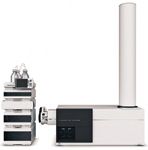
Portable GC–MS system
The Tridion-9 portable GC–toroidal mass spectro-metry system from Torion is designed for field GC–MS applications. The system reportedly combines an electronic pressure controlled gas chromatograph with an amplitude scanning toroidal ion trap mass spectrometer. According to the company, the system can be used with SPME syringes for sample introduction. Torion Technologies Inc., American Fork, UT;
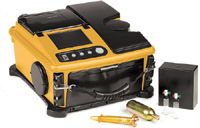

Newsletter
Get essential updates on the latest spectroscopy technologies, regulatory standards, and best practices—subscribe today to Spectroscopy.


